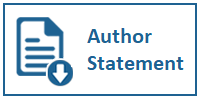DETERMINANTS OF TAX AVOIDANCE: GENDER DIVERSITY, CAPITAL INTENSITY, AUDIT COMMITTEE, AND BOARD SIZE
DOI:
https://doi.org/10.31937/akuntansi.v16i1.3571Abstract
Abstract” This study aims to determine the effect of Gender Diversity, Capital, Audit Committee, and the size of the board of directors on tax avoidance. A comparison of Effective Tax Rate data for three companies (energy, healthcare, and transportation sectors) in 2019-2022 shows that the ETR for energy companies is closer to the ETR than the other two sectors. It can be concluded that energy companies do more tax avoidance, where the lower the ETR, the greater the tax avoidance carried out. This is also supported by the practice of tax avoidance carried out by one of the mining companies, namely PT Adaro Energi Tbk in 2019. This research analyzes energy companies listed on the Indonesia Stock Exchange in 2019-2022. The sample in this study is 85 energy companies listed on the Indonesia Stock Exchange consecutively in 2019-2022. The sampling technique in this study used purposive sampling. The data analysis technique used is multiple linear regression with panel data modeling using the Eviews 12 program. The results showed that gender diversity and capital intensity can increase tax avoidance, meanwhile, audit committees and the size of the board of directors do not influence tax avoidance in energy companies in Indonesia. This research can be used as a consideration for companies to avoid tax avoidance and for the government to change tax regulations so that in the future there is no loophole for a company to carry out tax avoidance actions.
Keywords: Gender Diversity; Capital Intensity; Audit Committee; Board Size; Tax Avoidance
Downloads
Downloads
Published
How to Cite
Issue
Section
License
Authors retain copyright and grant the journal right of first publication with the work simultaneously licensed under a Creative Commons Attribution-ShareAlike International License (CC-BY-SA 4.0) that allows others to share the work with an acknowledgement of the work's authorship and initial publication in this journal.
Authors are able to enter into separate, additional contractual arrangements for the non-exclusive distribution of the journal's published version of the work (e.g., post it to an institutional repository or publish it in a book), with an acknowledgement of its initial publication in this journal.
















